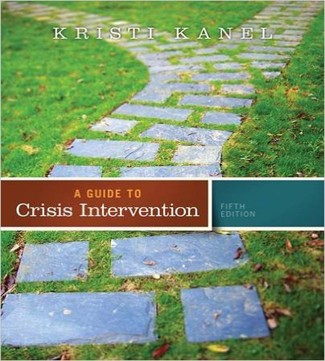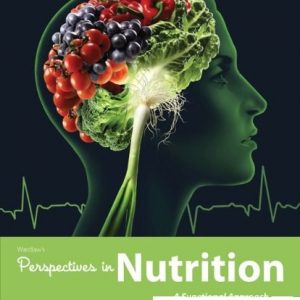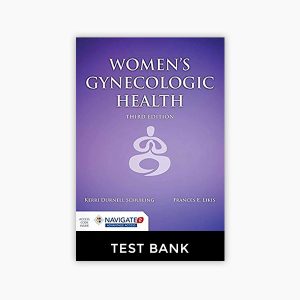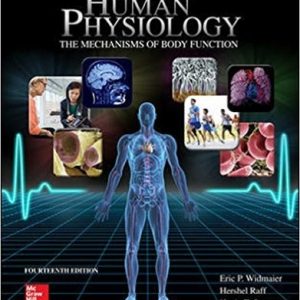A Guide to Crisis Intervention 5th edition Kanel Test Bank
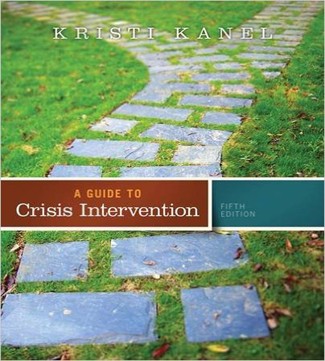
Product details:
- ISBN-10 : 1285739906
- ISBN-13 : 978-1285739908
- Author: Kristi Kanel (Ph.D., University of Southern California)
Description:
CHAPTER 1: WHAT IS A CRISIS AND CRISIS INTERVENTION?
Multiple Choice
1. Ego strength refers to:
A. how proud and self-centered the person is.
B. the amount of energy available to overcome post-traumatic stress disorder.
C. the ability to understand the world realistically and act upon it to get one’s needs met.
D. all of the above.
E. none of the above.
ANS: C
2. The outcome of a person’s crisis is determined by his or her:
A. material resources.
B. personal resources.
C. social resources.
D. all of the above.
E. none of the above.
ANS: D
3. The cognitive key refers to:
A. the precipitating event.
B. the coping strategies.
C. the meaning given to the precipitating event.
D. both A and B.
E. none of the above.
ANS: C
4. Which of the following is NOT an example of effective coping behavior according to Caplan?
A. Actively exploring reality issues
B. Learning to stifle emotions and contain them
C. Actively invoking help from others
D. All of the above
E. None of the above
ANS: B
5. An example of effective coping behavior is:
A. learning to accept that oneself cannot be trusted in crisis situations.
B. learning to master the problem as it comes to you as a whole.
C. mastering feelings where possible.
D. none of the above.
ANS: C
6. The curvilinear model of anxiety proposes:
A. anxiety is always negative and serves no purpose.
B. anxiety may be used to increase motivation.
C. anxiety should be avoided at all costs.
D. none of the above.
ANS: B
7. Which best describes the trilogy definition of a crisis?
A. A person experiences stress, suffers a nervous breakdown, and requires hospitalization
B. A precipitating even occurs, subjective distress is experienced, coping fails
C. An abnormal state which is caused by personality disorders, psychosis or organicity
D. Both A and B
E. None of the above
ANS: B
8. A crisis can be an opportunity because:
A. the person can grow from the challenge of dealing with the precipitating event.
B. the person can seek financial opportunity by winning malpractice lawsuits or workman’s compensation.
C. the person may learn to use ego defense mechanism.
D. all of the above.
E. none of the above.
ANS: A
9. A person in crisis may be in danger of:
A. becoming psychotic.
B. committing suicide.
C. coming through the crisis at a lower level of functioning.
D. all of the above.
E. none of the above.
ANS: D
10. Which of the following might determine how well someone manages a crisis?
A. Material resources
B. Personal resources
C. Social resources
D. All of the above
ANS: D
11. Caplan believed that all of the following are characteristics of effective coping behavior EXCEPT:
A. actively exploring reality issues.
B. trusting in oneself.
C. freely expressing feelings.
D. none of the above.
ANS: D
12. The crisis-prone person usually:
A. has access to their ego to deal with stress.
B. has depleted their ego strength and operates defensively.
C. engages in problem solving behaviors under stress.
D. all of the above.
ANS: B
13. Eric Lindemann studied:
A. the reactions of Vietnam veterans.
B. the reactions of the relatives of victims in the Coconut Grove fire.
C. the reactions of the Iraqi Veterans of 2003.
D. the reactions of sexually-abused children.
ANS: B
14. The concept of finite psychic energy comes from which theory?
A. Darwin’s
B. Psychoanalytic
C. Existential
D. Humanistic
E. None of the above
ANS: B
15. The empowerment model of crisis intervention where responsibility and choice are emphasized probably best represents which approach?
A. Existential
B. Humanistic
C. Behavioral
D. None of the above
ANS: A
16. The idea of growth and optimism comes from which theory?
A. Behaviorism
B. Psychoanalytic
C. Cognitive
D. None of the above
ANS: D
17. Carl Rogers and his person-centered counseling approach has contributed much in the way of:
A. empathy skills.
B. reflective skills.
C. genuineness skills.
D. all of the above.
E. none of the above.
ANS: D
18. Which theoretical approach is particularly useful in dealing with developmental and cultural crises?
A. Psychoanalysis
B. Darwinism
C. Family systems theory
D. All of the above
E. None of the above
ANS: C
19. When would a “runaway” exist in a family?
A. When a child turns 17
B. When the family cannot bring a crisis situation back into a homeostatic pattern
C. When the calibration of a family system is set by a therapist
D. All of the above
ANS: B
20. Suicide prevention became widespread in the:
A. 1800s.
B. 1960s.
C. 1990s.
D. 1980s.
ANS: B
21. The cognitive-behavioral theories have contributed which of the following to crisis intervention?
A. Interpretive techniques
B. The problem solving model
C. The exploratory model
D. All of the above
E. None of the above
ANS: B
22. Critical incident debriefing:
A. has been used to deal with community disasters.
B. does not use the coping strategies involved in crisis intervention.
C. has been used to replace crisis intervention.
D. all of the above.
ANS: A
True/False
1. Crises are abnormal and need long term therapy to overcome them.
ANS: F
2. The goal of crisis intervention is to change the precipitating event.
ANS: F
3. If left untreated, crisis states will usually last about one year.
ANS: F
4. Everyone who experiences a stressor in life will succumb to a crisis state. F
ANS: F
5. It is possible to grow after effective resolution of a crisis.
ANS: T
6. Caplan’s list of effective coping people includes the ability to invoke help from others.
ANS: T
7. Ego strength refers to one’s capacity to deal with the demands of reality.
ANS: T
8. Cognitive elements are of great importance in crisis work.
ANS: T
9. The major goal of crisis intervention is to increase the client’s functioning.
ANS: T
10. Situational crises often have an emergency quality to them.
ANS: T
11. Crisis intervention has its beginnings during the time of Freud.
ANS: F
12. The original population with which Lindemann developed his crisis intervention model was WWII veterans.
ANS: F
13. HMOs have just about dissolved the crisis intervention model.
ANS: F
14. Paraprofessionals are not qualified to conduct crisis intervention sessions.
ANS: F
15. Crisis intervention is popular with HMO’s and managed care.
ANS: T
Short Answer/Essay
1. Discuss the “trilogy” definition of a “crisis.”
2. Describe how a crisis can be both an opportunity and a danger.
3. How does someone become “crisis prone?”
4. What are three determining factors related to how someone will deal with a potential crisis?
5. What are Caplan’s seven characteristics of effective coping people?
6. What is meant by anxiety being curvilinear in nature?
7. When might medication be useful for someone in crisis?
8. How is stress different from a crisis?
9. Discuss the history of crisis intervention from the 1940s to the 21st century.
10. What contributions have the following made to the field of crisis intervention?
A. Psychoanalytic approach
B. Humanistic approaches
C. Existential approaches
D. Cognitive-behavioral approaches
E. Family systems models
11. How did the introduction of psychotropic medication and the deinstitutionalization of the mentally ill influence current crisis intervention and the provision of mental health services?
People also search:
a guide to crisis intervention 5th edition pdf free
what are the crisis intervention
how to do a crisis intervention
a guide to crisis intervention pdf

